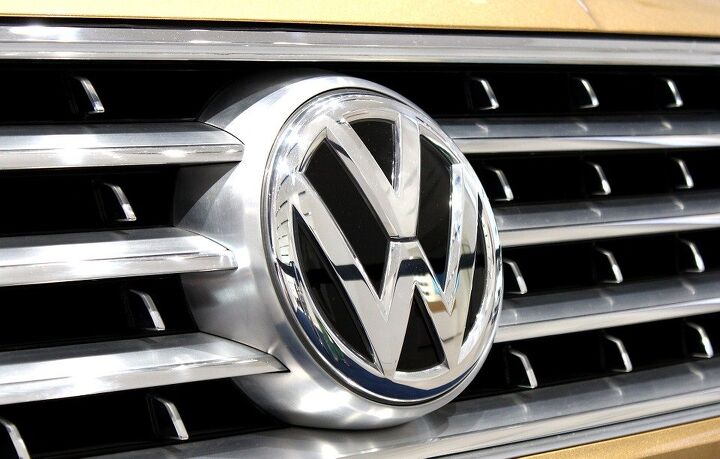Volkswagen Chooses An Interesting Name for Its New Chinese Brand

China’s all about electric vehicles and clean, green everything, or so the tankies granola types claim, and automakers from Detroit to Germany can’t wait to get their hands on a piece of that market. In Volkswagen’s case, China’s thirst for EVs spawned a brand new brand.
Unfortunately, as is often the case with language, the name of VW’s EV-focused brand could mean something very bad, depending on who reads it.
SOL.
A joint venture between VW and Chinese partner JAC, the SOL brand came about after China rejected the use of the Seat brand name in its market, Car News China reports. The German automaker then asked if “Xiyate” (Seat in Chinese) was okay. Apparently, it was not.
As the report shows, the first SOL-branded vehicle is a small, four-door crossover festooned with blue accents — a not-so subtle hint at the vehicle’s electric powerplant. It’s also not a Volkswagen in any sense; rather, it’s a rebadged JAC model. This particular SOL supposedly generates 114 horsepower and attains a top speed of 130 km/h (roughly 80 mph).
But back to that name, which appears in all caps. Sol, as many know, is Spanish for “sun.” Given that Seat is a Spanish brand, the inspiration for the name seems obvious. A sun rises, much like this brand, and it also generates electricity, which this car uses. The sun is a happy thing that makes plants grow. Sol is also a brand of Mexican beer and the name of a famous French Canadian clown. However, if you’re hip to the lingo these days, SOL is the acronym for “Shit Outta Luck.”
This author is reminded of past naming goofs, such as the Latin American-market Chevrolet Nova and the Canadian-market Buick LaCrosse. In the former case, “no va” translates into “doesn’t go,” though the story gained prominence through an urban legend, not a real-world PR crisis. GM was apparently aware of the coincidence and didn’t care. It wasn’t okay with selling the first-generation LaCrosse in Canada, however, as the model’s name means “masturbation” in Quebecois slang. The Buick Allure debuted in Canada instead. (As of the current generation, the LaCrosse name has returned to Buick’s full-sizer in the Great White North.)
Whether or not VW or JAC brass was aware of this connection is unknown, though it’s possible they were and felt it just wasn’t a big deal. Volkswagen aims to build 40 electric models in China, spurred by the investment of $12 billion over seven years. Many of these models will have their roots in borrowed or dedicated Chinese architecture. Others, however, will borrow the MEB platform destined for the U.S. in the form of the I.D., I.D. Crozz, I.D. Buzz, and I.D. Vizzion.
Speaking of poor naming choices…
[Image: Volkswagen]

More by Steph Willems
Latest Car Reviews
Read moreLatest Product Reviews
Read moreRecent Comments
- Lorenzo I just noticed the 1954 Ford Customline V8 has the same exterior dimensions, but better legroom, shoulder room, hip room, a V8 engine, and a trunk lid. It sold, with Fordomatic, for $21,500, inflation adjusted.
- Lorenzo They won't be sold just in Beverly Hills - there's a Nieman-Marcus in nearly every big city. When they're finally junked, the transfer case will be first to be salvaged, since it'll be unused.
- Ltcmgm78 Just what we need to do: add more EVs that require a charging station! We own a Volt. We charge at home. We bought the Volt off-lease. We're retired and can do all our daily errands without burning any gasoline. For us this works, but we no longer have a work commute.
- Michael S6 Given the choice between the Hornet R/T and the Alfa, I'd pick an Uber.
- Michael S6 Nissan seems to be doing well at the low end of the market with their small cars and cuv. Competitiveness evaporates as you move up to larger size cars and suvs.


































Comments
Join the conversation
Back in the 1960s an Italian firm came up with a small off-roader called the FART Breack. I'm not making this up. http://www.woiweb.com/index.php/FART
Until recently, VW had a car named the Eos. Seems like they had the answer inside themselves all along.